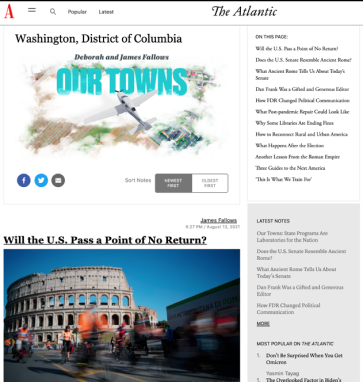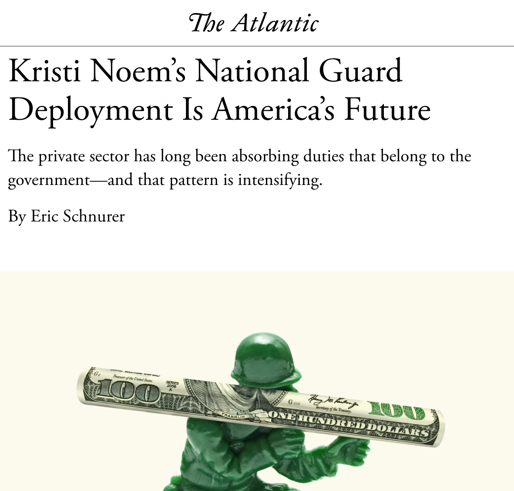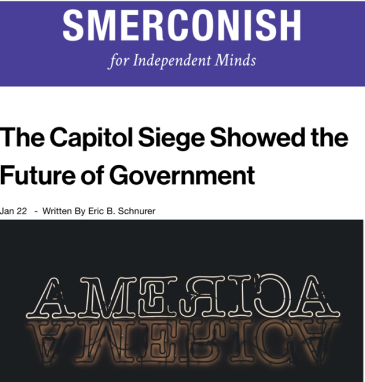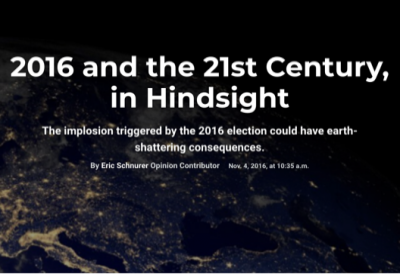STRATEGY
Public Works offers governments a unique top-to-bottom approach to all the challenges currently facing the public sector. This starts with understanding over-the-horizon events—the dramatic changes that governments will face over the next decade—progresses to strategic planning to meet these challenges proactively,—and finishes with comprehensive metrics to ensure performance in the future.
We have recognized leaders envisioning The Future of Government: teaching this subject at the nation’s leading graduate public policy schools; writing regularly on it for the Aspen Institute and publications ranging from The Atlantic to US News & World Report and Foreign Affairs, and speaking on it to national gatherings ranging from the National Governors Association annual meeting to the annual policy conference of the nation’s Blue Cross/Blue Shield plans.
We correctly foresaw in 2015 that Americans would turn to a populist outsider business-type in 2016, and in 2016 predicted first that if Hillary Clinton didn’t change her tune Trump would win and then when he did, that four years later he would refuse to concede defeat – and a massive armed mob would come to his defense. Our clients benefit from our often-prescient insights into short-and long-term socio-political and economic trends. irelandpills.com

Strategic Visioning
Strategic Planning
We don’t just offer high-level, long-range forecasts and insights. We marry these with a sophisticated, data-driven, analytic structure and seasoned experience provide concrete strategic planning. Our strategic planning process has been tested and refined in numerous consulting engagements – especially during the last year of the COVID-19 pandemic.
- We’re not simply facilitators: We bring our unique understanding of governmental and societal trends, how change really happens – and how it’s already happening today.
- Most planners at some point engage in a “SWOT Analysis” (Strengths, Weaknesses, Opportunities, Threats). We see these latter factors as Headwinds (Threats) and Tailwinds (Opportunities): as challenges – and openings for creative and valuable policy innovation – rather than as “threats.”
- Traditional strategic planners start with defining Mission, Vision, and Values and then map out a plan for attaining them. We believe it is more effective first to assess the needs of the customers you aim to serve and then assess your priorities in meeting those needs.
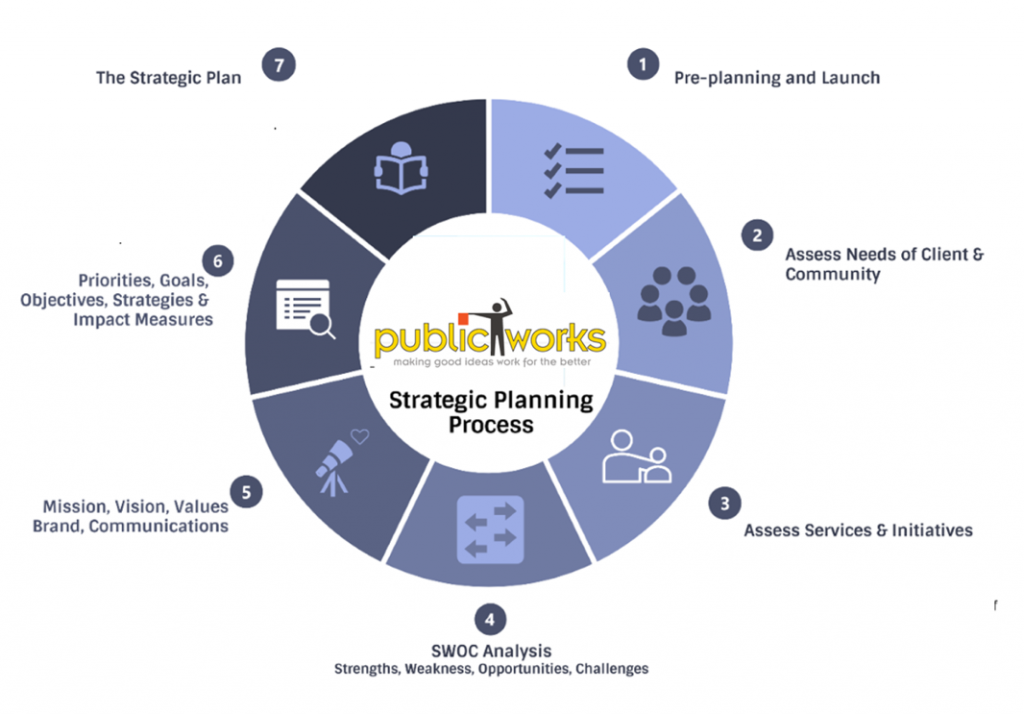

- Central to all our work is active stakeholder engagement, and an emphasis on input from all levels of the “org chart.” We believe everyone needs to be engaged in the planning and analysis in order for an organization to achieve “buy-in” and success in the implementation.
- Ultimately, the most important question to be addressed through strategic planning is: What would you like to be true at the end of the strategic plan cycle that’s not true today?
- As a result of the pandemic, we have developed a suite of technological tools for interacting and communicating with clients and stakeholders at a distance – in many cases provoking better engagement than we can engender in-person.

